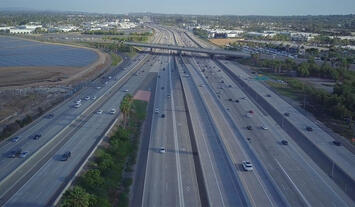
Over the six decades that transit subsidies have been virtually universal, governments and media have urged people to give up driving and switch to transit. Yet transit’s share of total urban travel was near modern lows just before the pandemic. It is recovering more slowly than other modes of travel, as transit analyst Randal O’Toole has shown in New Geography.
Indeed, city officials often portray transit as a readily available alternative to the car. But transit can quickly access only a small fraction of destinations compared to cars for most people. This article provides data for the largest metropolitan areas in the 13 Western states.
This is not an argument for cars, but simply a recognition that cars better serve what many (including this author) consider to be the ultimate domestic public policy objectives – improving affluence and reducing poverty (see: Toward More Prosperous Cities).
Improving Affluence
Economists such as Remy Prud’homme and Chang-Won Lee at the University of Paris, as well as David Hartgen and Gregory Fields at the University of North Carolina – Charlotte, have shown a strong association between better economic performance in metropolitan areas where more jobs can be reached in a specified time (such as 30 minutes) by the average resident.
Former senior advisor to the U.S. Department of Transportation Steven Polzin noted the relationship between economic progress and faster travel times in the United States and the economic losses from spending more time than necessary commuting.
An average 30-minute travel time, also called the “Marchetti Constant,” has endured through history. In the United States, about 60 percent of workers commuted less than 30 minutes (excluding those working at home), according to the American Community Survey, 2019.
Reducing Poverty
Moreover, because cars make so many more jobs accessible, they improve household income prospects. David King and associates at Arizona State University have found that households without cars are 70-percent more likely to be in poverty. Margy Waller of the Progressive Policy Institute found that, “In most cases, the shortest distance between a poor person and a job is along a line driven in a car.” One can only wonder how much unemployment would be reduced if auto-competitive mobility were available to all residents.
Read the rest of this piece at Pacific Research Institute.
Wendell Cox is principal of Demographia, an international public policy firm located in the St. Louis metropolitan area. He is a founding senior fellow at the Urban Reform Institute, Houston, a Senior Fellow with the Frontier Centre for Public Policy in Winnipeg and a member of the Advisory Board of the Center for Demographics and Policy at Chapman University in Orange, California. He has served as a visiting professor at the Conservatoire National des Arts et Metiers in Paris. His principal interests are economics, poverty alleviation, demographics, urban policy and transport. He is co-author of the annual Demographia International Housing Affordability Survey and author of Demographia World Urban Areas.
Mayor Tom Bradley appointed him to three terms on the Los Angeles County Transportation Commission (1977-1985) and Speaker of the House Newt Gingrich appointed him to the Amtrak Reform Council, to complete the unexpired term of New Jersey Governor Christine Todd Whitman (1999-2002). He is author of War on the Dream: How Anti-Sprawl Policy Threatens the Quality of Life and Toward More Prosperous Cities: A Framing Essay on Urban Areas, Transport, Planning and the Dimensions of Sustainability.
Photo: Pacific Research Institute.












